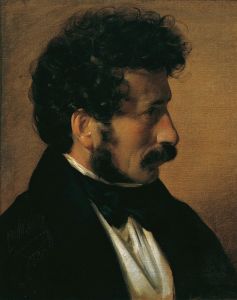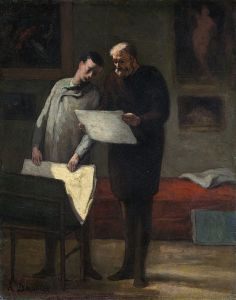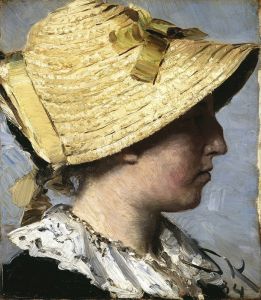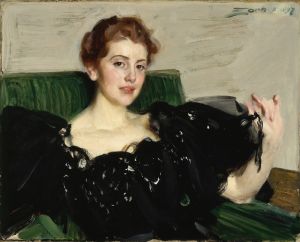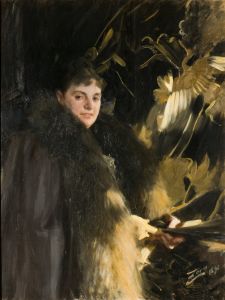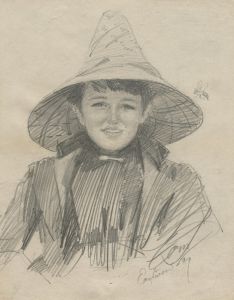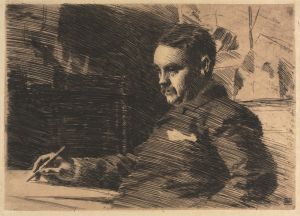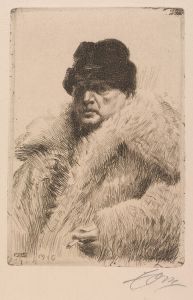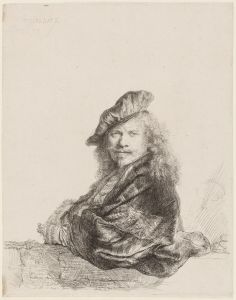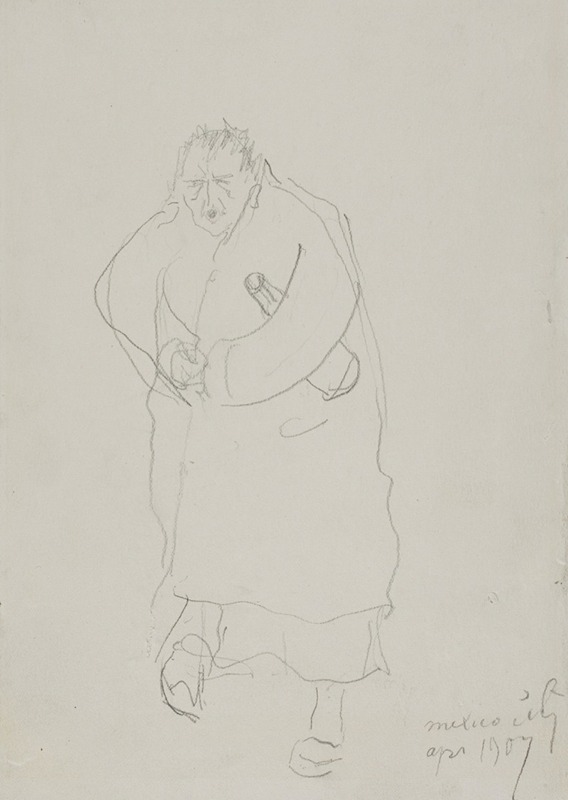
Self-Portrait
A hand-painted replica of Anders Zorn’s masterpiece Self-Portrait, meticulously crafted by professional artists to capture the true essence of the original. Each piece is created with museum-quality canvas and rare mineral pigments, carefully painted by experienced artists with delicate brushstrokes and rich, layered colors to perfectly recreate the texture of the original artwork. Unlike machine-printed reproductions, this hand-painted version brings the painting to life, infused with the artist’s emotions and skill in every stroke. Whether for personal collection or home decoration, it instantly elevates the artistic atmosphere of any space.
Anders Zorn, a prominent Swedish artist, is renowned for his masterful portraits, and his self-portraits are particularly notable for their insight into his character and artistic evolution. One of his self-portraits, simply titled "Self-Portrait," exemplifies his skill in capturing both the physical likeness and the psychological depth of his subjects, even when the subject is himself.
Zorn was born in 1860 in Mora, Sweden, and he became one of the most acclaimed artists of his time, celebrated for his ability to depict the human form with remarkable realism and vitality. His self-portraits are an integral part of his oeuvre, offering a glimpse into his personal and professional life. Throughout his career, Zorn painted numerous self-portraits, each reflecting different stages of his life and artistic development.
The "Self-Portrait" by Anders Zorn is characterized by its meticulous attention to detail and the use of light and shadow to create a lifelike representation. Zorn was known for his ability to use a limited palette to achieve a wide range of tones and textures, a technique that is evident in this work. His self-portraits often reveal his confidence and self-assuredness, traits that were essential to his success as an artist.
Zorn's technique involved the use of loose, fluid brushstrokes that conveyed a sense of immediacy and spontaneity. This approach allowed him to capture the essence of his subjects with remarkable clarity and precision. In his self-portraits, Zorn often depicted himself in a straightforward manner, without embellishment, which adds to the authenticity and sincerity of the work.
The context in which Zorn created his self-portraits is also significant. During the late 19th and early 20th centuries, portraiture was a popular genre, and Zorn's ability to capture the likeness and personality of his subjects made him highly sought after by patrons across Europe and the United States. His self-portraits, however, were not commissioned works but rather personal explorations of his own identity and artistry.
Zorn's self-portraits also reflect his mastery of different mediums. While he is perhaps best known for his oil paintings, he was also an accomplished etcher and watercolorist. His versatility as an artist is evident in the variety of techniques and styles he employed in his self-portraits, each offering a unique perspective on his self-image.
In addition to their artistic merit, Zorn's self-portraits are valuable historical documents. They provide insight into the life of a successful artist at the turn of the 20th century, a time of significant social and cultural change. Through his self-portraits, Zorn not only documented his own appearance but also captured the evolving artistic trends and techniques of his era.
Overall, Anders Zorn's "Self-Portrait" is a testament to his skill as a portraitist and his ability to convey the complexity of human emotion and identity. His self-portraits remain an important part of his legacy, offering viewers a window into the mind of one of Sweden's most celebrated artists.





